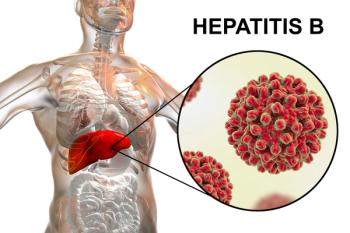Pharmacists’ ability to administer oral anticoagulation (OAC) therapy highlights a significantly effective opportunity to close gaps in the delivery of prescriptions to treat the reduction of stroke risk in patients with actionable atrial fibrillation (AF). With no increase in adverse events or the use of health care services, the next step in pharmacists’ ability to deliver OAC prescriptions is measuring the scalability and sustainability in future studies, according to authors of a study published in JAMA Network Open.1
One of the leading causes of stroke in older adults and the most common heart rhythm disorder, AF is commonly treated with OAC therapy because of its efficacy and availability. However, whether it be the difficulty to measure a patients’ stroke risk or to identify AF symptoms, many patients go untreated, leaving large gaps in therapy delivery that are necessary to address.
Key Takeaways
- Researchers aimed at understanding the differences between delayed and early pharmacist interventions of oral anticoagulation therapy for patients with actionable atrial fibrillation.
- Results detailed the pharmacist's advanced expertise in treating patients with AF and helping to increase the risk reduction of stroke.
- With pharmacists continuing to succeed in treating patients with cardiovascular diseases, researchers want to understand the sustainability and scalability of their interventions.
“Given that stroke is the leading cause of disability in the US, and contributes to morbidity, premature death, and high costs, understanding the gaps in guideline-recommended OAC in understudied patient groups is an important first step towards decreasing the risk of stroke in the growing population with AF nationally,” wrote Malik et al.2
With the persistence of difficulty in administering OAC prescriptions, many researchers have looked to pharmacists to understand their capabilities within the cardiovascular space; and previous studies have confirmed these abilities.
In a meta-analysis of pharmacist interventions on cardiovascular risk factors and outcomes, researchers found that “pharmacist intervention can provide a wide range of benefits in cardiovascular disease management, ranging from risk factor control, improvement in medication adherence, and, in some settings, reduction in morbidity and mortality,” according to a study published in the British Journal of Clinical Pharmacology.3
Researchers in Sandhu et al’s study, however, aimed at investigating whether pharmacists can provide an increased rate of stroke reduction in patients with actionable AF—defined as untreated or underdiagnosed patients with AF—using OAC therapy. And with the help of previous literature, pharmacists were prime candidates to have their expertise tested in this capacity of cardiovascular intervention.
“Growing evidence indicates that pharmacist-based interventions for optimizing cardiovascular disease care, particularly when focused on adherence to guideline-directed therapies, can lead to marked and sustained improvement in clinical outcomes. The most commonly reported gaps in delivery of OAC therapy include nonprescription, inappropriate medication, or suboptimal dosing, all of which can be directly and effectively targeted with pharmacist-based interventions,” wrote the authors.1
As part of their randomized clinical trial, researchers observed 80 patients (mean age, 79.7; 56.3% women) 65 and older with actionable AF and at least 1 additional stroke risk factor. The study was conducted at 27 community pharmacies in Alberta, Canada, testing the differences between early and delayed pharmacist intervention from January 2019 through December 2022.
The delayed intervention group was considered the control group, and both study groups were required to complete follow-up appointments at 1 and 3 months. Researchers’ primary outcome was to understand the “difference in the rate of guideline-concordant OAC use in the 2 groups at 3-month follow-up ascertained by a research pharmacist blinded to treatment allocation.”1 In other words, researchers hoped to assess how often pharmacists could administer OAC therapy according to proper guidelines.
In the early intervention group, 36 of 39 patients (92.3%) received guideline-concordant OAC therapy at the 3-month follow-up. For patients in the delayed intervention control group, however, only 56.1% received the intended OAC therapy. Furthermore, of the 23 individuals in the control group that received the proper OAC therapy, 6 patients needed their primary care provider to call a pharmacist for prescribing advice.
“Pharmacies provide an ideal setting for addressing care gaps in OAC delivery and may be especially beneficial in underserved communities. In the US alone, there are 13 billion pharmacy visits per year, 270 million visits per week, and 4000 visits weekly per pharmacy. Nearly all US residents (91%) live within 5 miles of a community pharmacy,” they wrote.1
The results of this study and researchers’ encouragement for pharmacists to undertake more clinical responsibilities adds to the ongoing literature regarding the expanding scope of pharmacists’ abilities. Between the sheer accessibility and convenience that pharmacists exhibit in their day-to-day duties, accommodating patients with actionable AF seems like it could easily become another resource that sets pharmacists apart from other health care providers.
However, implementing pharmacists’ expertise and allowing them to become a staple in treating cardiovascular disease must be thoroughly developed and gradually applied.
“This study provides evidence of a potentially high-yield opportunity to effectively close gaps in the delivery of stroke risk reduction therapy for AF. Scalability and sustainability of pharmacist OAC prescription will require larger trials demonstrating effectiveness and safety,” concluded the authors.1
READ MORE: American Heart Association Launches Initiative to Include Pharmacists in Atrial Fibrillation Care
Ready to impress your pharmacy colleagues with the latest drug information, industry trends, and patient care tips? Sign up today for our free Drug Topics newsletter.
References
1. Sandhu RK, Fradette M, Lin M, et al. Stroke risk reduction in atrial fibrillation through pharmacist prescribing: A randomized clinical trial. JAMA Netw Open. 2024;7(7):e2421993. doi:10.1001/jamanetworkopen.2024.21993
2. Malik S, Gustafson S, Chang HR, et al. Gaps in guideline-recommended anticoagulation in patients with atrial fibrillation and elevated thromboembolic risk within an integrated healthcare delivery system. BMC Cardiovasc Disord. 2023;23(1):578. 2023 Nov 21. doi:10.1186/s12872-023-03607-y
3. Rattanavipanon W, Chaiyasothi T, Puchsaka P, et al. Effects of pharmacist interventions on cardiovascular risk factors and outcomes: An umbrella review of meta-analysis of randomized controlled trials. Br J Clin Pharmacol. 2022; 88(7): 3064-3077. doi:10.1111/bcp.15279












































































































































































































